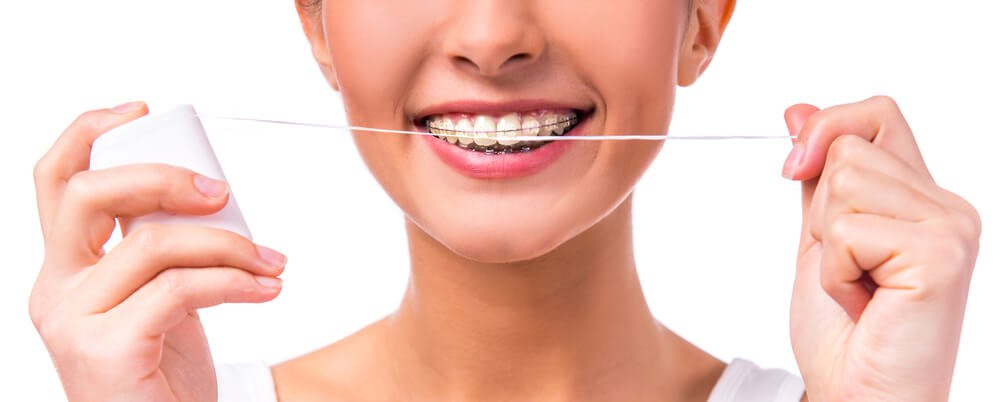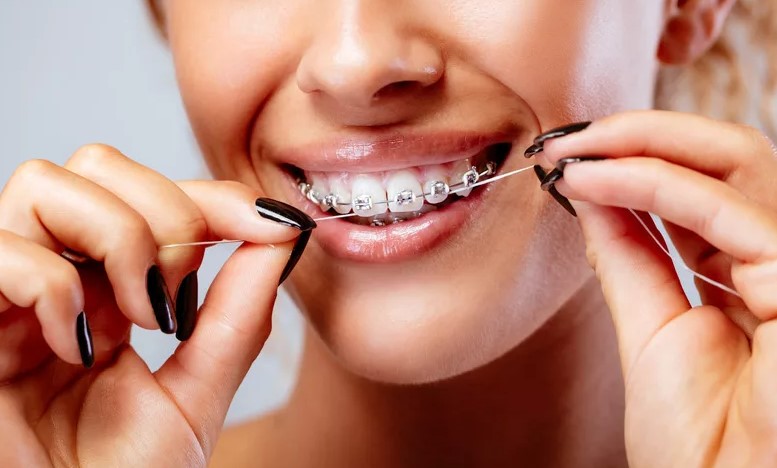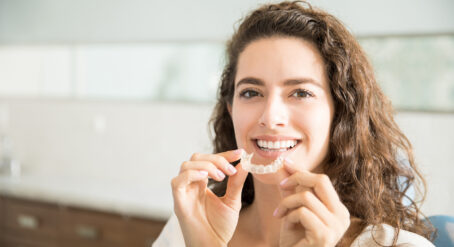Food can easily get stuck between your child’s braces. In order to maintain healthy teeth and gums, it is essential that they learn to properly care for their teeth, gums and braces throughout their treatment. Although it might initially seem difficult, learning to floss with braces does get easier with practice.
Below we’ll give you step-by-step instructions for this crucial part of their oral care routine.
Is flossing necessary with braces?
Hate to floss? Well we’re sorry but it is essential when you’re undergoing any form of orthodontic treatment like traditional metal braces. Food and plaque can get stuck which makes the perfect breeding ground for bacteria. Skipping this important step can lead to bad breath, tooth decay, gum disease and discoloured teeth. Luckily we’re here to help you master this!
Should you floss or brush first?
Before flossing, they will need to brush their teeth thoroughly. Food and plaque can get caught between the brackets, wires and between the teeth, so their brushing technique should cover all surfaces of each tooth (outer surfaces, inner surfaces, top and bottom surfaces). They should also use a mixture of motions, including side-to-side and circular motions, to remove all food and plaque, spending time focussing on both the teeth and their braces.

Now they can move on to flossing:
Step 1
Get a long piece of dental floss (roughly 18cm), so that the ends can be wrapped around your index fingers while flossing.
Step 2
Step 3
Wrap the ends of the floss around your index fingers to gain more control of the floss. The more control you have over the motion, the less likely it is that you’ll hurt your gums.
Step 4
Use firm but gentle pressure to wriggle the floss between your teeth and remove all food particles and plaque build-up.
Tip: Rather than holding the floss straight, have it form a ‘C’ shape to hug around each tooth. That is, run the floss along the vertical side of each tooth.
Step 5
Continue this gentle technique, working your way around the mouth.

Does it hurt to floss with braces?
Even at the best of times flossing can be tricky. We’ve all been a little too over eager and caused our gums to bleed. The good news is that the more frequently you floss, the healthier your teeth and gums will be and the less likely it is that you will experience any pain and discomfort. If it is your first time, go slow and be careful and you should be fine. If pain persists make sure you speak to your orthodontist and dentist for their advice.
How often should you floss with braces?
Ideally, you would floss and rinse your mouth after every meal so that your teeth and breath remain fresh. We know this isn’t always possible, so as long as you floss at least once a day your teeth (and your orthodontist!) will be happy.
What else can I use except for floss?
If you have a hard time flossing with string or tape, there are other methods to help keep the teeth and gums clean, such as interdental toothbrushes. These small brushes have been designed to get into small spaces including around brackets and the gaps between teeth and can be particularly helpful when undergoing braces treatment.
Floss vs waterpiks – what’s better?
Trying to decide between traditional floss and a new waterpik? We recommend sticking with floss during your treatment. While waterpiks can be great at getting large pieces of food out of your braces, they aren’t great at targeting the plaque build up that leads to tooth discolouration. When it comes to your daily routine, make sure you’re being thorough to look after your teeth and gums properly.
Flossing with braces takes too long
We know that flossing isn’t as quick as you would like – particularly when your appliance gets in the way. You might find that waxed floss, a floss threader or even and interdental toothbrush makes it faster and easier to get the job done. As long as you’re being thorough and careful it really doesn’t matter what method you choose.
Still unsure about the correct flossing technique?
Ask your orthodontist or dental therapist/hygienist to demonstrate the proper technique at your next appointment. They may also direct you to the best products or techniques to properly care for your child’s smile.










